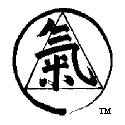“Relaxation means releasing all concern and tension and letting the natural order of life flow through one's being” – Donald Curtis
When I was an actor, a bad performance was often described as “wooden”. This characterized stiff movement and a dialog delivery that sounded mechanical. The source of this was usually nerves. When we are nervous we tend to tense our muscles. Sometimes, we only tense a few muscles resulting in a stiff neck, sore shoulders or an aching back. At other times, we will tense every muscle in our body resulting in a near paralysis of our bodies.
As an experiment, stand in the center of a room and tense every muscle in your body. Then, while maintaining this state try to walk or do any simple task. If you could observe yourself objectively you would see someone moving similar to a clumsy robot. This is exactly what happens when we are over-run with emotions.
After performing the above experiment, we see how the body reacts when it is not relaxed. But how does it appear when we are relaxed? There are two types of relaxation:
1. Static Relaxation – characterized by a limp body with very little energy showing in the extremities. This type of relaxation could be likened to a car parked for the night with the motor off. Very little energy is being consumed
2. Dynamic Relaxation – characterized by a soft but firm body with the body in a ready state. Utilizing the automobile metaphor, this type of relaxation is similar to when the car is started, the transmission is in gear and the driver’s foot is on the brake. The car is in a ready state and energy is being used, but at a much slower rate than if the car was moving.
Here are two exercises that can demonstrate the differences between these two states. You will need partner for both of them.
In the first exercise, stand, as you would normally, with your feet no more than shoulder width apart. Relax your arms completely so that they feel limp at your side. Have you partner lightly grasp you at your wrist and and raise you wrist straight up toward your elbow. If this exercise is done correctly your wrist will move up, your elbow will bend and your shoulder will move with very little effort on the part of your helper. This is Static Relaxation.
In the next exercise, begin by standing as you did in the first. Gently start to bounce on the balls of your feet with your heels coming off the ground, but not your whole foot. Allow the energy of the bounce to begin to travel up your body to just below your navel, up your torso to your shoulders and down through your arms. When the energy of the bounce reaches your wrists, let your hands begin to shake as if you were trying to dry them but didn’t have a towel. The movement should be a gentle bounce and not at all violent. Do this for about 30 seconds and then begin to slow the bounce until your entire body has stopped with your hands at your side. Then have your partner test you as before. This time your helper should have more difficulty raising your arm, if they can do it at all. You will find that even though there is increased effort on the part of your partner, you will be expending almost no energy. This is the essence of Dynamic Relaxation.
Coming up in the next post - Find Center and Balance
Wednesday, February 11, 2009
Reality Check – Get Calm and Centered - Be Relaxed
Subscribe to:
Post Comments (Atom)


No comments:
Post a Comment